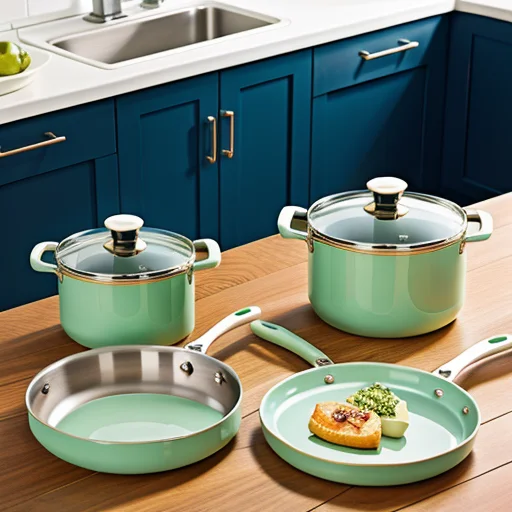As an Amazon Associate I earn from qualifying purchases.
In the vast world of cookware, the options seem endless. From cast iron to carbon steel to nonstick pans, you have a huge variety of choices when outfitting your kitchen. With so many materials and technologies available, it can be tricky to determine which type of cookware is right for your cooking needs and style.
Two of the most popular categories of cookware that have surged in popularity in recent years are granite vs ceramic. But what exactly sets these two apart? And is one better than the other?
In this comprehensive guide, we’ll unpack everything you need to know about granite coating vs ceramic coating . We’ll dive into the key differences, pros and cons, and do a detailed comparison to help you decide whether granite or ceramic is a better fit for your kitchen.
Factors we’ll evaluate include durability, cooking performance, ease of use, safety, heat conduction, appearance, and more. Let’s get cooking!
Overview of Granite Coating
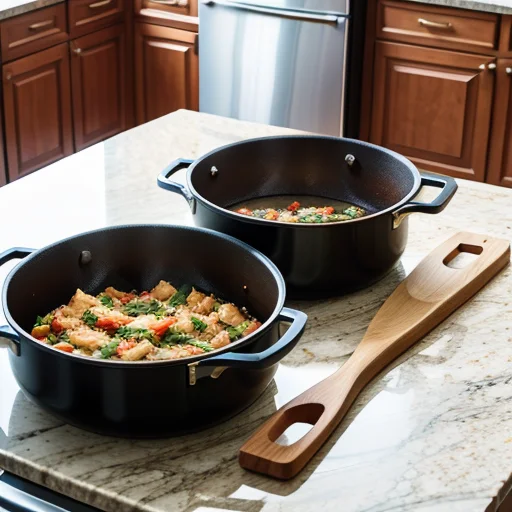
First up – granite cookware. This type of pan gets its name from its distinct speckled appearance, which resembles natural granite stone. But don’t be fooled by the name – granite cookware isn’t actually made of stone.
Composition and Manufacturing
Granite cookware consists of a base metal made of carbon steel, coated with a porcelain enamel exterior finish. The coating is applied through a process of dipping or spraying the carbon steel base in liquid porcelain enamel, before it is fired at high heat to fuse it into a smooth, nonstick coating.
This enamel coating is what gives granite cookware its signature speckled look, resembling particles in real granite. In addition to style, it also provides key functional benefits which we’ll explore shortly.
Appearance and Styling
Visually, granite cookware has an eye-catching appearance. As mentioned, the exterior coating has a speckled black, grey, and white finish that mimics natural granite stone. This makes it much more distinct and stylish than bare metal cookware.
The colors and finish can also vary slightly across brands and product lines. Some may appear more black, while others emphasize flecks of white and gray. Overall though, they share that realistic granite-inspired look.
Thanks to its stone-like veneer, granite cookware has a striking, high-end appearance that stands out in any kitchen. The finish hides grill marks and other irregularities better than bare metal as well. The stylish granite aesthetic is a major selling point.
Features and Benefits
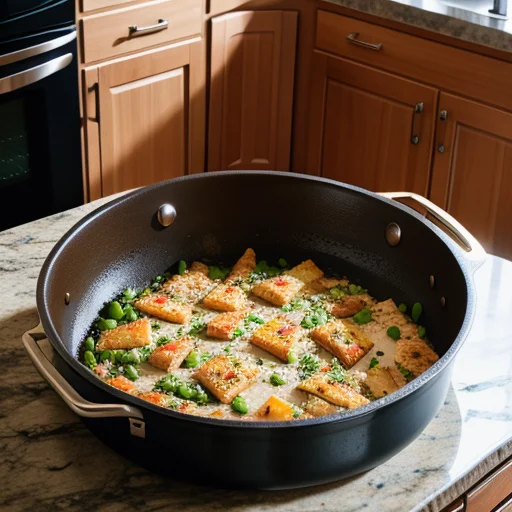
Beyond good looks, the porcelain enamel coating also provides core benefits:
Nonstick Properties
The enameled exterior creates an ultra-smooth nonstick surface. Food easily releases with little need for oils or butter. This allows for low-fat cooking.
Rust Resistance
Unlike bare carbon steel, the porcelain enamel coating protects the base metal from corrosion and rust. It holds up well to humidity, acids, and daily wear and tear.
Even Heating
While the enamel coating looks stone-like, it allows the carbon steel base to heat up quickly and evenly. This prevents hot spots for consistent cooking.
Durability
The enameled surface resists scratching, denting, and chipping better than Teflon or ceramic coatings. It adds impact resistance.
Easy Cleaning
Food doesn’t stick to the ultra-smooth enameled surface, making after-cooking cleanups a breeze. The pans are also dishwasher safe for added convenience.
Affordability
Compared to premium stainless steel or ceramic cookware, granite pans offer impressive performance and quality at a budget-friendly price point.
These core strengths make granite cookware a versatile, high-functioning, and affordable nonstick cooking option. The stylish appearance is icing on the cake.
Drawbacks to Consider
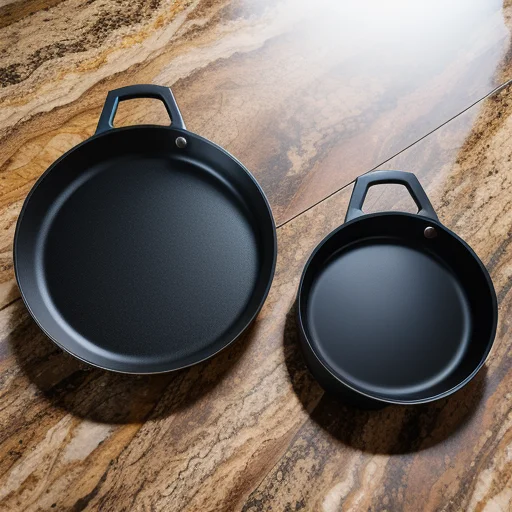
No cookware is perfect though, so there are a few potential drawbacks of granite pots and pans to note:
- Not for Induction – The enamel coating makes granite pans incompatible for induction cooktops.
- Prone to Chipping – The enamel can chip if overheated or impacted against hard surfaces. Proper care is needed.
- Heavy – The dense carbon steel and enamel add noticeable weight compared to nonstick aluminum or titanium pans.
- Requires Seasoning – For best nonstick performance, granite pans need occasional seasoning with oil, much like cast iron.
With proper use though, these limitations are manageable. Overall, granite cookware offers outstanding functionality, style, and value as a nonstick cooking surface.
Overview of Ceramic Coating
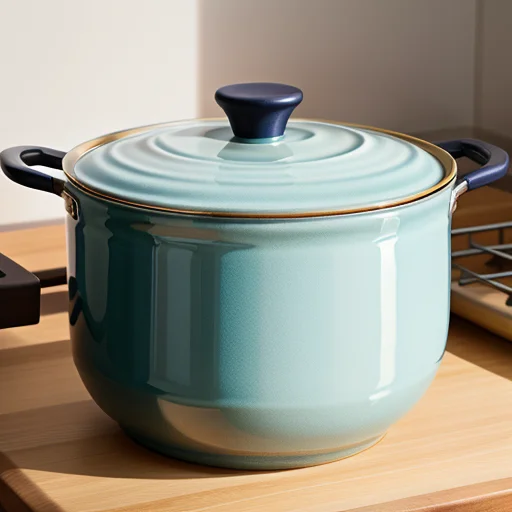
Ceramic cookware has exploded in popularity in recent years as consumers seek out safer and more eco-friendly alternatives to Teflon. But what exactly is ceramic cookware, and how is it different from other options?
Composition and Manufacturing
True to its name, ceramic cookware is constructed from natural clay that has been shaped and kiln-fired at high temperatures to harden it into cookware. Water and binders are combined with the clay to give it flexibility for molding before firing.
There are two main categories of ceramic cookware:
Ceramic-Coated: This type features a ceramic-based nonstick coating applied to the surface of metal cookware – usually aluminum or stainless steel. It provides a smooth, non-reactive finish.
Solid Ceramic: Constructed entirely from ceramic without any metal component. Offers superior heat distribution but is prone to impact cracks.
Advanced nano-ceramic coatings have also emerged, made from ultra-fine ceramic particles suspended in liquid silica sol gel. This molecular ceramic layer maximizes nonstick properties.
Appearance and Styling
One advantage of ceramic over granite and metal cookware is the ability to offer colorful, contemporary styling. Ceramic cookware comes in a diverse range of bright, sleek colors to match any décor.
The ceramic surface also has an ultra-smooth glossy appearance, almost like glass. Unlike granite’s flecks and speckles, ceramic offers a consistent, uniform finish.
Various modern design elements like contoured handles and riveted accents add appeal. For contemporary interior design styles, ceramic cookware makes a fashionable statement.
Features and Benefits
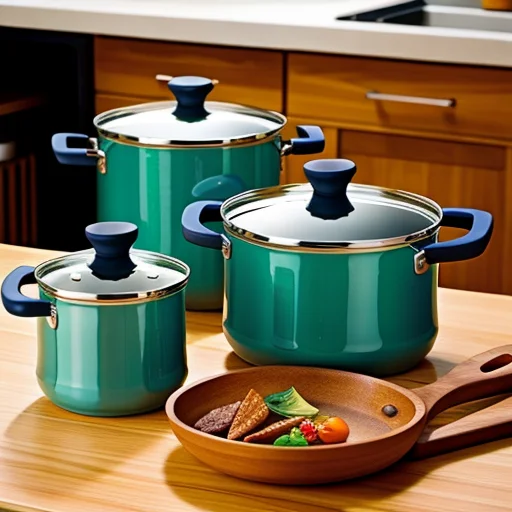
In addition to good looks, ceramic cookware also touts several functional benefits:
Superior Nonstick Properties
The super-smooth ceramic surface allows food to slide off easily without sticking. Little to no oil or butter is needed for low-fat cooking.
Quick Heating
Ceramic distributes heat more efficiently than metals, allowing it to heat up rapidly on the stovetop for faster cooking.
Even Heating
Solid ceramic pots and pans in particular provide exceptional even heating. There are no hot spots, and ceramic retains heat well for consistent cooking results.
Chemical-Free
Unlike Teflon, ceramic coatings are free of PTFE, PFOA, lead, and other hazardous chemicals. This makes ceramic one of the safest nonstick options.
Stain-Resistant
The non-porous glazed ceramic surface resists stains from spices, sauces, and oils that can discolor other cookware over time.
Thanks to these strengths, ceramic delivers high performance as a healthy and environmentally-friendly nonstick cooking surface.
Drawbacks to Consider
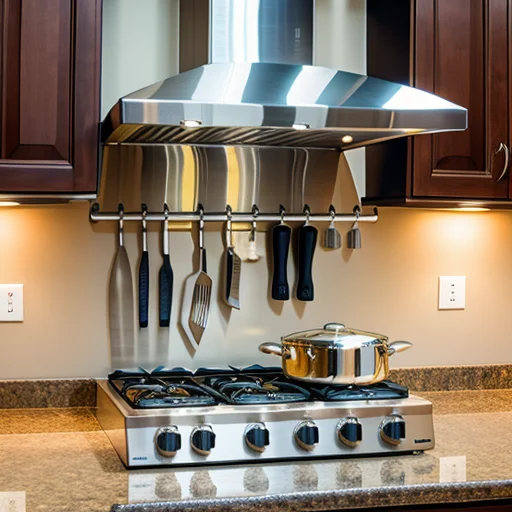
Ceramic cookware isn’t without a few downsides to factor in as well:
- Prone to Chipping – The ceramic surface can chip or crack if impacted. Careful handling is required.
- Not for High Heat – May sustain damage if exposed to very high temperatures, so low-to-medium heat is best.
- Slow Heat Response – While it heats quickly, ceramic is slower to cool down and doesn’t adjust heat as rapidly as metals.
- Metal Utensil Scratches– Metal cooking implements can damage the surface, so wood or plastic tools are best.
- Higher Cost – 100% ceramic pots and pans are pricier than granite or enamel cookware. Ceramic-coated is more affordable.
With proper care and usage, these limitations can be managed. Overall, ceramic still shines as an innovative and versatile nonstick cooking material.
Now that we’ve covered the basics of both granite coating vs ceramic coating cookware, let’s pit them head-to-head across some key comparison criteria to crown a winner!
Granite Coating vs Ceramic Coating Comparison
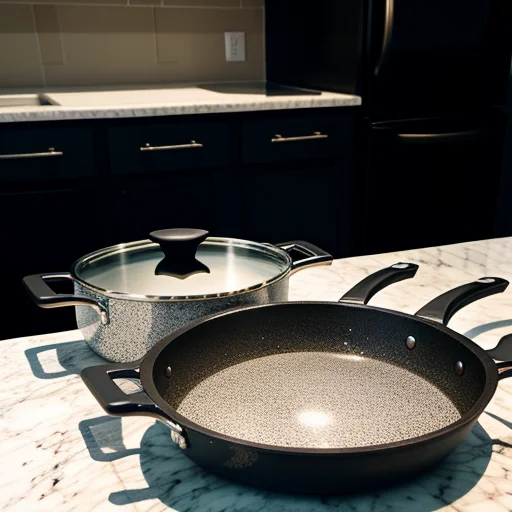
We’ve explored the similarities and differences between granite coating vs ceramic coating. But how do they stack up against each other in terms of performance, durability, and user experience? Let’s break it down.
Cooking Performance
First up – cooking performance. How do granite and ceramic pots and pans actually perform when it comes to nonstick properties, heating capabilities, ease of use, and more?
Nonstick Properties
Both granite and ceramic deliver excellent nonstick performance right out of the box. Their ultra-smooth surfaces allow food to slide right off with minimal sticking or residue. This makes cooking and cleanup a breeze.
Cooking Performance Continued
When it comes to nonstick alone, it’s largely a draw between granite and ceramic. Both offer excellent food release and require little to no oil or butter for low-fat cooking.
However, 100% ceramic may have a slight edge over granite and ceramic-coated pots and pans. The molecular structure of solid ceramic lends itself to the ultimate nonstick surface. But both are impressively nonstick for healthy cooking.
Heating Properties
In terms of heating capabilities, ceramic pulls ahead of granite. Ceramic’s superior heat conduction means it heats up rapidly on the stove or in the oven. It also retains heat effectively for even cooking results.
Granite won’t heat quite as quickly or evenly, thanks to the enamel coating insulating the carbon steel base. It’s still suitable for most cooking methods, but not ideal for tasks like searing meat where instant high heat is needed.
Versatility
Both granite coating vs ceramic coating can be used for the majority of everyday cooking tasks like frying eggs, simmering sauces, or searing chicken. The main limitation is avoiding very high heat with ceramic, where granite can typically go a bit hotter.
For versatility across different cooking techniques on the stovetop or in the oven, granite coating vs ceramic coating are evenly matched. Just stay under 500°F for ceramic, and use proper utensils to avoid scratches.
Ease of Use
Thanks to their excellent nonstick properties, both granite coating vs ceramic coating are very easy to cook with. Food slides around easily, cleanup is simple, and little oil or butter is needed.
Ceramic’s higher heat retention may give it a minor advantage for ease of use. Food can finish cooking evenly once removed from the heat source. But granite still excels in convenience thanks to its quality nonstick enameled surface.
Winner: Ceramic Cookware
While both deliver impressive nonstick cooking performance, ceramic pulls ahead for its superior heat conduction, retention, and distribution. The versatility is comparable, with a slight upper hand to ceramic.
Durability and Longevity
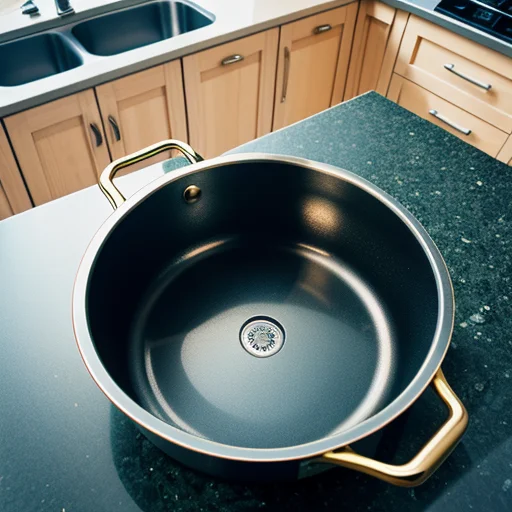
For cookware to perform well, it also needs to hold up over years of regular cooking and cleaning. How do granite and ceramic pots and pans compare for durability?
Impact Resistance
Thanks to its tough enamel coating over carbon steel, granite cookware is highly impact and chip resistant. The heavy-duty construction allows it to withstand bumps, bangs, and the occasional drop better than delicate ceramic.
Solid ceramic with no metal base is prone to cracks and chips if dropped or hit. Ceramic-coated cookware stands up to impacts better, but still requires gentle care. Granite is the clear winner when it comes to resisting cracks and damage.
Wear Resistance
The durable enameled surface of granite resists scratches and wear well with proper care. Ceramic holds up reasonably well to daily use but is more vulnerable to degradation over time.
Neither material will last forever with daily high-heat cooking. But granite better withstands the gradual effects of metal utensils, oven use, and dishwashing compared to ceramic over many years of use.
Heat Resistance
One advantage of ceramic over granite is its ability to withstand very high temperatures. While granite can typically handle up to 500°F, ceramic won’t sustain damage until 850°F or beyond.
This gives ceramic cookware an edge for high-heat searing, broiling, or other cooking methods requiring extreme temperatures. Granite can’t match the heat range of ceramic.
Winner: Granite Coating
While ceramic has outstanding heat resistance, granite cookware is ultimately more durable and able to withstand years of cooking, cleaning, and everyday use without chipping or degrading. It’s heavier construction leads to greater longevity.
Appearance and Styling
Beyond performance, appearance is also an important factor for many home chefs. granite coating vs ceramic coating definitely differ when it comes to visual style.
Colors and Patterns
Thanks to the diverse colors ceramic can be glazed in, it offers cookware in a rainbow of colors to suit any kitchen. Granite is limited to black, gray, and white speckled patterns in imitation of real granite.
For cooks who want cookware as a fashion accessory to match their décor, ceramic provides more versatility. Granite’s speckled natural look has broad appeal, but less customization.
Handles and Hardware
Ceramic’s lighter weight makes it easier to incorporate more ergonomic handle designs. Riveted handles and accents can also be matched to the cookware’s color.
The heavier granite requires sturdier handles and hardware. But various colors and finishes are still available to complement the speckled exterior nicely.
Finishes and Textures
Ceramic has an ultra-smooth glossy finish that maintains its luster over time. Granite develops a unique patina as the enamel ages. The speckles can also collect residue if not cleaned promptly after cooking.
For a uniform appearance, ceramic delivers. But some may enjoy the weathered appeal of aged granite, much like a vintage cast iron pan. It comes down to personal preference.
Winner: Ceramic Cookware
With its diverse color choices, ability to match décor, and lasting smooth surface, ceramic cookware is the winner when it comes to aesthetics and styling versatility. Granite offers charm too but is more limited in colors and patterns.
Cleaning and Care
After cooking up a storm, the last thing you want is a chore cleaning and caring for your pots and pans. So how do granite coating vs ceramic coating compare when it comes to cleaning convenience?
Manual Washing
Thanks to their nonstick designs, both granite coating vs ceramic coating are relatively easy to clean by hand. Food residue wipes away without heavy scrubbing required.
Ceramic’s slick glazed surface may have a minor edge here. But neither material should leave you scrubbing for long, especially if cleaned promptly after cooking.
Dishwasher Safety
Here’s where granite pulls ahead – its durable enamel construction can withstand regular dishwasher cleaning without issue. The high heat and detergents won’t degrade the finish.
Ceramic, on the other hand, can sustain chipping, cracking, and clouding when washed in the dishwasher. For longest life, hand washing is recommended.
Care and Maintenance
Both materials require some basic care. Granite may need occasional re-seasoning with oil to maximize nonstick performance. Ceramic should be hand-washed and dried gently.
But granite cookware has an advantage in terms of low maintenance. It holds up well to metal utensils, high heat, and frequent use without babying. Ceramic needs a gentler approach for best results.
Winner: Granite Cookware
While ceramic cleans up beautifully, granite’s durability makes it a better choice for no-fuss care. It holds up better to dishwashers, scouring, high heat, and years of reliable service.
The Final Verdict: Granite Coating Vs Ceramic Coating
So in this battle of granite coating vs ceramic coating cookware, which reigns supreme?
Here’s a quick recap of how they compared across our criteria:
- Cooking Performance – Ceramic wins for its heating capabilities and distribution
- Durability – Granite is tougher and withstands impact and wear better
- Appearance – Ceramic offers more versatility, colors, and patterns
- Cleaning – Granite excels for dishwasher-safe convenience
While both materials make excellent nonstick cookware, if we had to crown an overall winner, it would be ceramic coating thanks to its unbeatable cooking properties and modern style.
However, solid ceramic does come at a cost premium. For cooks on a budget, granite remains a top-tier option combining nonstick versatility, durability, and value.
Ultimately, the choice comes down to your cooking preferences, priorities, and kitchen décor. Both granite coating vs ceramic coating will make a wonderful addition to your cookware collection with pros and cons.
We hope this comprehensive comparison has helped highlight the key differences and performance factors between granite coating vs ceramic coating. Whichever you choose, enjoy taking your cooking to slick new nonstick levels! Bon appétit!
As an Amazon Associate I earn from qualifying purchases.

